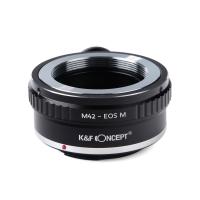When Were Microscopes Made ?
The first microscopes were made in the late 16th century.
1、 Invention of the compound microscope in the late 16th century.
The invention of the compound microscope in the late 16th century marked a significant milestone in the field of science and has since revolutionized our understanding of the microscopic world. The exact date of its creation is not precisely known, but it is widely attributed to the Dutch spectacle maker, Zacharias Janssen, around the year 1590. Janssen, along with his father Hans, is believed to have developed the first compound microscope by combining multiple lenses to achieve magnification.
However, it is important to note that the concept of magnification and the use of lenses to enhance vision had been explored by various scholars and inventors prior to Janssen's breakthrough. For instance, the ancient Egyptians and Romans used simple magnifying lenses made from glass or crystal to aid in vision. Additionally, the Arab scholar Alhazen described the principles of magnification in the 11th century.
The compound microscope developed by Janssen consisted of two or more lenses that allowed for higher magnification and improved resolution compared to previous designs. This innovation paved the way for further advancements in microscopy, enabling scientists to observe and study the intricate details of cells, microorganisms, and other microscopic structures.
Over the centuries, the microscope has undergone numerous improvements and refinements. In the 17th century, the renowned scientist Antonie van Leeuwenhoek made significant contributions to microscopy by perfecting the single-lens microscope, which allowed for even higher magnification. His observations of microorganisms, such as bacteria and protozoa, opened up a whole new world of understanding.
In recent times, the development of electron microscopy has further expanded our capabilities to visualize and study the microscopic world. Electron microscopes use beams of electrons instead of light to achieve much higher magnification and resolution. This has enabled scientists to explore the atomic and molecular structures of materials and biological specimens in unprecedented detail.
In conclusion, while the exact date of the invention of the compound microscope remains uncertain, it is widely acknowledged to have occurred in the late 16th century. This invention, along with subsequent advancements in microscopy, has played a crucial role in advancing scientific knowledge and has become an indispensable tool in various fields, including biology, medicine, and materials science.
2、 Development of the electron microscope in the 1930s.
The development of microscopes can be traced back to the late 16th century when the first compound microscope was invented by Hans and Zacharias Janssen. This early microscope consisted of a tube with lenses at each end, allowing for magnification of small objects. However, it wasn't until the 17th century that the microscope truly began to advance with the work of scientists like Robert Hooke and Antonie van Leeuwenhoek.
Hooke's publication of "Micrographia" in 1665 showcased his observations using a compound microscope, revealing the intricate details of various objects. Leeuwenhoek, on the other hand, was a skilled lens maker who developed a single-lens microscope capable of achieving higher magnification than the compound microscope. With these advancements, the field of microscopy began to flourish.
Fast forward to the 20th century, and the electron microscope revolutionized the field of microscopy. The development of the electron microscope in the 1930s by Max Knoll and Ernst Ruska allowed for even higher magnification and resolution than previously possible. Instead of using light, electron microscopes use a beam of electrons to illuminate the sample, resulting in a much higher level of detail.
Since the 1930s, electron microscopes have continued to evolve, with advancements in technology leading to improved resolution and the ability to study samples at the atomic level. Today, electron microscopes are widely used in various scientific fields, including biology, materials science, and nanotechnology.
It is important to note that while the development of the electron microscope in the 1930s was a significant milestone, the history of microscopes is a continuous journey of innovation and improvement. New techniques and technologies are constantly being developed to push the boundaries of what can be observed and understood at the microscopic level.
3、 Introduction of the scanning electron microscope in the 1960s.
Microscopes have played a crucial role in advancing our understanding of the microscopic world. The development of microscopes can be traced back to the late 16th century when the first compound microscopes were invented. However, it was not until the 1960s that a groundbreaking innovation in microscopy occurred with the introduction of the scanning electron microscope (SEM).
The SEM revolutionized the field of microscopy by providing scientists with a powerful tool to visualize the surface of specimens at extremely high magnifications. Unlike traditional microscopes that use light to illuminate specimens, the SEM uses a beam of electrons to scan the surface of the sample. This allows for detailed imaging of the specimen's topography and composition.
The introduction of the SEM in the 1960s marked a significant milestone in microscopy. It enabled researchers to explore the nanoscale world with unprecedented clarity and detail. The SEM quickly became an indispensable tool in various scientific disciplines, including materials science, biology, and geology.
Since its inception, the SEM has undergone significant advancements. Modern SEMs are equipped with sophisticated detectors and imaging techniques, allowing for even higher resolution imaging and the ability to analyze elemental composition. Additionally, advancements in computer technology have facilitated the development of automated imaging and analysis software, making SEMs more user-friendly and efficient.
Today, the SEM continues to be a vital tool in scientific research and industry. It has contributed to numerous discoveries and breakthroughs, ranging from the study of cellular structures to the development of new materials. The SEM's ability to provide detailed imaging and analysis at the nanoscale has opened up new avenues for scientific exploration and technological advancements.
In conclusion, the introduction of the scanning electron microscope in the 1960s revolutionized the field of microscopy. Since then, the SEM has undergone significant advancements, allowing for even higher resolution imaging and analysis. It remains a crucial tool in scientific research, providing valuable insights into the microscopic world.
4、 Advancements in confocal microscopy in the 1970s.
Microscopes have been an essential tool in scientific research for centuries, allowing scientists to observe and study objects at a microscopic level. The invention of the microscope is often attributed to the Dutch scientist Antonie van Leeuwenhoek in the late 17th century. However, the concept of magnifying objects using lenses dates back to ancient times.
The first microscopes made by Leeuwenhoek were simple, single-lens devices that could achieve magnifications of up to 300 times. These early microscopes paved the way for further advancements in the field. Over the years, scientists and inventors continued to refine and improve upon the design of microscopes, leading to the development of compound microscopes with multiple lenses and higher magnification capabilities.
Fast forward to the 1970s, and we see significant advancements in microscopy with the introduction of confocal microscopy. Confocal microscopy revolutionized the field by allowing researchers to obtain high-resolution, three-dimensional images of specimens. This technique uses a laser beam to scan the sample, and a pinhole aperture to eliminate out-of-focus light, resulting in sharper images with improved contrast.
Since the 1970s, confocal microscopy has continued to evolve and improve. New technologies and techniques have been developed, such as spinning disk confocal microscopy and multiphoton microscopy, which have further enhanced the capabilities of this imaging method. These advancements have allowed scientists to study biological processes in unprecedented detail, leading to breakthroughs in various fields, including cell biology, neuroscience, and medicine.
In recent years, there has been a growing interest in super-resolution microscopy, which surpasses the diffraction limit of light and enables the visualization of structures at the nanoscale. Techniques such as stimulated emission depletion (STED) microscopy and single-molecule localization microscopy (SMLM) have pushed the boundaries of what is possible in microscopy, allowing researchers to observe cellular structures and processes with incredible precision.
In conclusion, microscopes have come a long way since their inception in the late 17th century. The advancements in confocal microscopy in the 1970s marked a significant milestone in the field, enabling researchers to obtain high-resolution, three-dimensional images. Since then, microscopy techniques have continued to evolve, with super-resolution microscopy now pushing the boundaries of what can be observed at the nanoscale. These advancements have revolutionized scientific research and continue to drive discoveries in various disciplines.

































